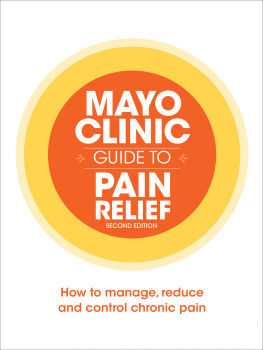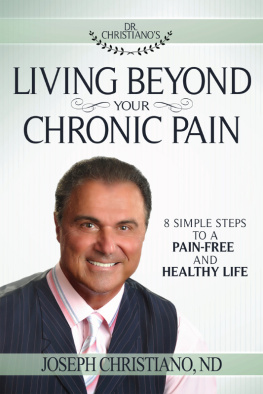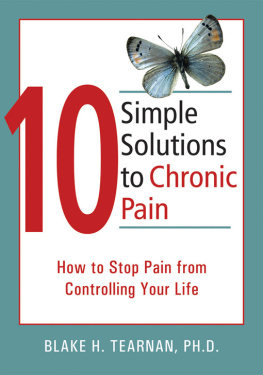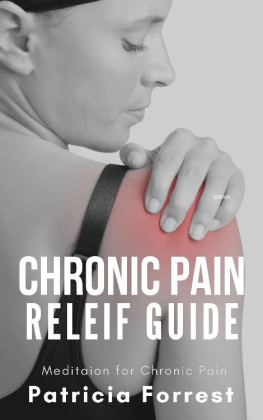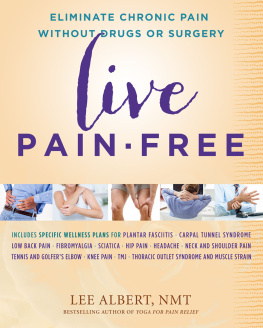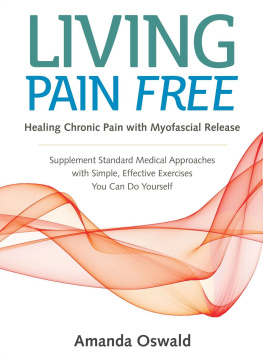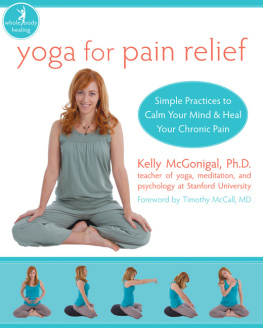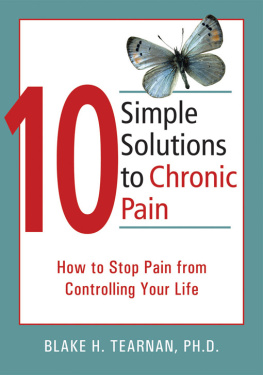We hope you enjoyed reading this Atria Books eBook.
Join our mailing list and get updates on new releases, deals, bonus content and other great books from Atria Books and Simon & Schuster.
C LICK H ERE T O S IGN U P
or visit us online to sign up at
eBookNews.SimonandSchuster.com
Thank you for downloading this Atria Books eBook.
Join our mailing list and get updates on new releases, deals, bonus content and other great books from Atria Books and Simon & Schuster.
C LICK H ERE T O S IGN U P
or visit us online to sign up at
eBookNews.SimonandSchuster.com
A LSO BY I NGRID B ACCI
The Art of Effortless Living

A Division of Simon & Schuster, Inc.
1230 Avenue of the Americas
New York, NY 10020
www.SimonandSchuster.com
Copyright 2005 by Ingrid Bacci, Ph.D.
All rights reserved,
including the right of reproduction
in whole or in part in any form.
ATRIA BOOKS and colophon are trademarks of Simon & Schuster, Inc.
Designed by Karolina Harris
Library of Congress Cataloging-in-Publication Data is available.
ISBN 978-1-4165-8451-3
ISBN 1-4165-8451-X
ISBN-13: 978-1-4165-8321-9 (eBook)
This publication contains the opinions and ideas of its author. It is intended to provide helpful and informative material on the subjects it addresses. It is sold with the understanding that the author and publisher are not engaged in rendering medical, health, or any other kind of personal professional services in the book. The reader should consult his or her medical, health, or other competent professional before adopting any of the suggestions in this book or drawing inferences from it.
The author and publisher specifically disclaim all responsibility for any liability, loss, or risk, personal or otherwise, that is incurred as a consequence, directly or indirectly, of the use and applications of any of the contents of this book.
The names and characteristics of some individuals in this book have been changed.
For my father, who taught me to think and feel deeply, and to my mother, who was always there
Acknowledgments
Deepest thanks go to my literary agent and friend, Stephanie Von Hirschberg. Through numerous conversations, she gently prodded me into fine-tuning and systematizing my ideas so as to give birth to this book. Thanks go also to Leslie Meredith, my talented editor at Simon & Schuster. She spared no efforts in polishing and pruning what began as an occasionally verbose manuscript.
Certain colleagues have played a particularly important role in my professional evolution. My experienceas both patient and practitionerof craniosacral therapy has influenced my perception of the healing process. Thanks go to all the teachers under whom I have studied craniosacral therapy through the Upledger Institute. Special thanks to the institutes founder, Dr. John Upledger, and to Lisa Up-ledger, who has been both mentor and teacher to me.
I have been fortunate to have a close friend, colleague, and gifted physical therapist in Meryle Richman. Through every step of the evolution of this book, I have shared and discussed my ideas with her and profited from her valuable feedback. When we have had enough of ideas, a good dinner in her company, a thirty-mile bike ride, or a trip to the theater has offered just the right diversion.
I cannot imagine closer friends than Susan and Michael Lanzano. They are my constant emotional and intellectual support team, available for me throughout the writing of this book, as in all aspects of my life. My good friend Beverly Lieberman has also been unwavering in her support, reminding me that I am here to help others heal themselves, as I learned to heal myself.
Our clients are our best teachers. I am particularly grateful to Michael Alfano, Josephine Kovacs, and Anthony Pisacano for having given me the opportunity to work with them.
My family forms my bedrock and foundation. To my mother, my stepmother, Maristella, and my sisters Madeleine, Lavinia, and Donatella (in order of age!), heartfelt gratitude for the love you share so willingly. You are always in my heart.
Contents
Introduction
If you suffer from chronic pain, you are not alone. Chronic pain is a social and personal problem of epidemic proportions in our society. In the course of their lifetime, 80 percent of Americans will suffer from chronic pain related to dysfunction of the muscles, bones, and joints. In 2004, at least 50 million Americans were living in chronic pain. Back pain is the leading cause of visits to doctors, hospitalization, surgery, and work disability. The Centers for Disease Control and Prevention (CDC) estimated in 2002 that one-third of all Americans had some form of joint disease, most commonly osteoarthritis. And a new musculoskeletal pain syndrome, identified in 1990 as fibromyalgia, has become the second most commonly diagnosed chronic pain disorder after osteoarthritis. By 2004, an estimated 8 million people were said to be suffering from fibromyalgia, 85 percent of them women.
If you suffer from chronic pain related to the bones, joints, or muscles, have not yet found adequate relief, and feel frustrated at the limited assistance available to you, this book is for you . It offers you a thoroughand unusually simpleunderstanding of the causes of chronic neuromuscular, joint, and skeletal pain, along with a clear, step-by-step process for reducing and possibly even eliminating pain. Unfortunately, traditional health care has proven to be woefully inadequate for people suffering from chronic pain. Of all physical illnesses and nonacute problems, chronic pain is recognized as the one least susceptible to treatment with traditional health care techniques, and according to The Journal of the American Medical Association , pain is the number-one reason people turn to alternative medicine.
Traditional health care has been unable to meet the demand for effective therapy and unable to stem the growth of chronic pain. The cost to our society is increasingly burdensome. When we look at standard medical treatments for neuromuscular, skeletal, and joint dysfunctions, we see why. There are two predominant modes of therapy: surgery and medication. Each of them has significant drawbacks. Surgery is beneficial in some cases but is not always a viable option. Moreover, even where surgery is a possible form of treatment, its benefits are far more limited than the public generally believes. A survey conducted in 2003 by the American Academy of Physical Medicine and Rehabilitation concluded that a full 48 percent of the population believes that surgery is the only real cure for at least half of all low-back-pain cases. But, the academy continued, surgery is actually effective in less than 5 percent of cases! In a similar vein, a report published in 2003 in The New England Journal of Medicine said that doctors are far too aggressive in using operations to treat pain. Finally, according to a Norwegian study of 126 disk-surgery patients, four years after surgery those who had been operated on had equivalent levels of pain to those who had not. The implications are that the advantages of surgery are more limited than we tend to think and that anyone with chronic pain should seriously consider other options before going under the knife.
The second standard form of medical treatment for chronic pain is medication. Its goal is usually either to reduce inflammation or to suppress symptoms. It is most useful as a short-term therapy. Over the long term, however, it can result in toxic side effects, sometimes even including severe intestinal bleeding and heart disease. Patients on regular medication can also expect, as the months and years go by, to need increasing doses of such drugs, which may harm their health and which treat only the symptoms and not the source of their discomfort. They are likely to experience a gradual increase of pain and disability; anxiety over a physical condition that seems beyond their control; a sense of powerlessness; and the depressing feeling that they must live with a problem that is incurable.
Next page

